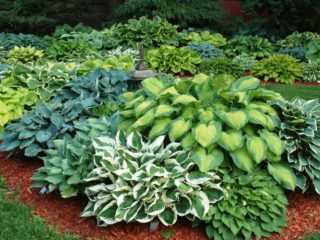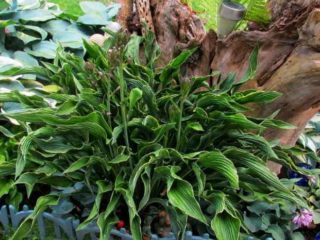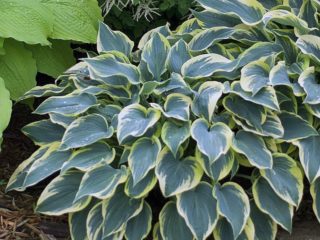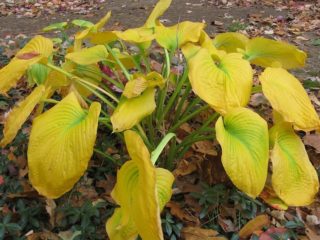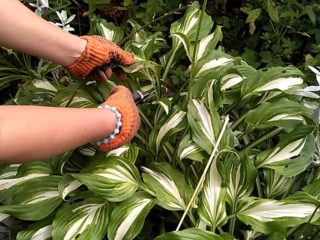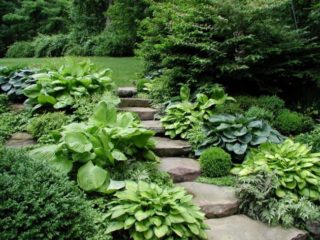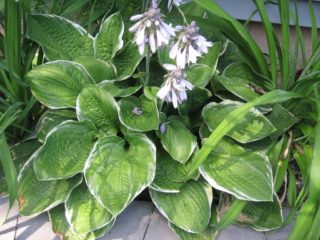Content
Hosta Golden Meadows is distinguished by very beautiful, large leaves that decorate the garden well in single and group plantings. This is an unpretentious plant that tolerates even the harshest winters down to -40 degrees. The hosta is not capricious in its care, so even a beginner can cope with its cultivation.
Description of Golden Meadows hosts
Golden Meadows is distinguished by unusual wrinkled leaves with a round, twisted shape. They have a very unique color: the center of the leaf is bright golden, and already in mid-summer it becomes more muted, creamy, and then acquires a yellow-green hue.
Along the edges, the leaves of Golden Meadows are painted in soft green and bluish shades - they harmonize well with the central part. The leaves are quite large in size: 20 cm long, 10 cm wide. They are located on dense cuttings that form a large rosette.
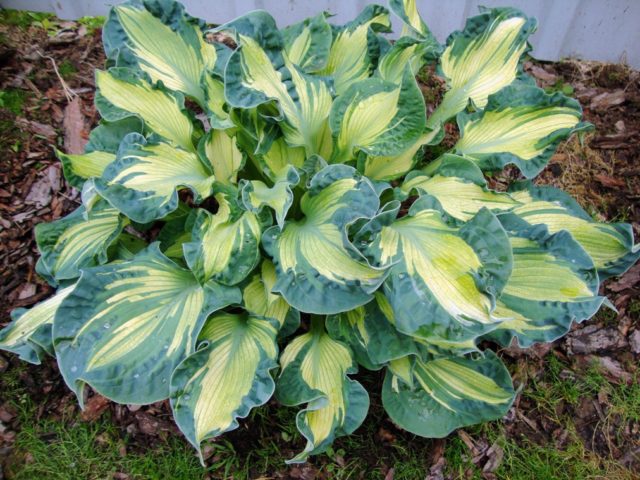
Golden Meadows has beautiful leaves with a pleasant yellow-green-blue color.
The bush is small in height - up to 50-60 cm, not very spreading. It begins to bloom in the second half of summer, the flowers are not large, drooping, white in color.They are formed in small inflorescences, with the peduncles rising above the main part of the bush by 10-15 cm.
Golden Meadows prefers to grow in moderately shaded areas. If the region has a lot of cloudy days, it is better to plant it in an open area. In the south, stable shading (from trees or shrubs) is preferable.
In terms of winter hardiness, the hosta Golden Meadows is one of the hardiest. It can withstand even very harsh winters down to -40 degrees, so it is classified as winter hardiness zone 4. Cultivation is allowed in all regions of Russia, including:
- Central part;
- Ural;
- Southern Siberia;
- Far East.
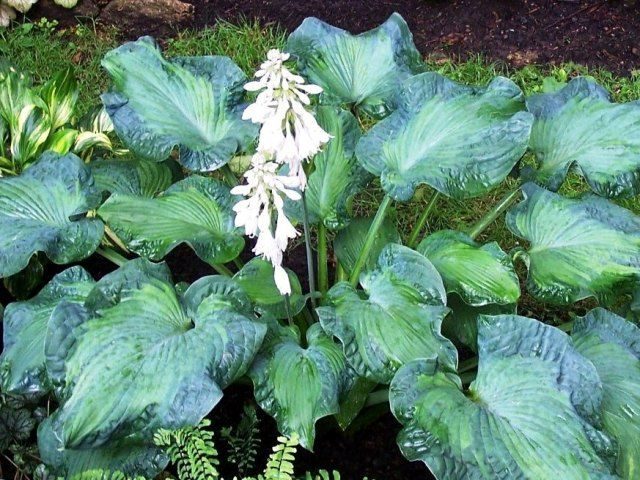
Golden Meadows blooms in late July and early August
Application in landscape design
Golden Meadows has really unusual, large leaves with interesting colors. Therefore it can be used:
- in single plantings (a row of several seedlings of the same age);
- in mixborders;
- in rock gardens;
- in plantings along paths for their decoration;
- on rocky flower beds;
- on the coast of small bodies of water.
This species, like other hosta varieties, goes well with a wide variety of plants. Bushes look advantageous in compositions with the following crops:
- other hosta species, especially taller ones (for example, Blue Mammoth, Jade Cascade, Dino, Empress Wu);
- low-growing varieties of daylily;
- astilbe;
- adiantum stop-shaped;
- rhododendron;
- forget-me-not;
- purple periwinkle;
- coniferous plants (juniper, thuja, dwarf fir, dwarf cedar and others).
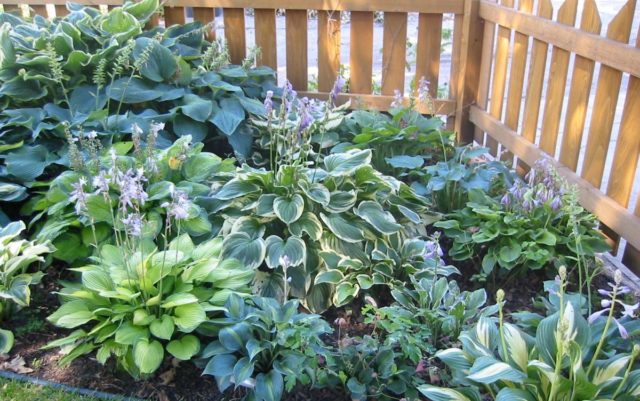
Golden Meadows looks good in group plantings with other hostas
Propagation methods for Hosta Golden Meadows
You can grow hosta at home. To do this, it is advisable to work with relatively mature plants (3-5 years). The main breeding methods are:
- dividing the bush;
- growing from seeds;
- cuttings
The simplest of them is dividing the bush. You can grow hosta in this way at any warm time of the year - for example, in spring, summer or autumn (a month before the first frost). The sequence of actions is as follows:
- Using a sharp shovel, dig the ground within a radius of 35 cm from the center of the hosta (diameter, respectively, 70 cm).
- Cut out the ground along with the bush.
- Gently untangle the root hairs and, if necessary, wash off the soil from them.
- Cut with a knife into several sections (each of them should have 2-3 sprouts).
- Transplant into soil with a similar composition and approximately the same depth at which the mother plant grows.
Landing algorithm
The optimal planting time is the second half of spring. At this time, the snow melts completely in all regions, and the risk of return frosts is minimal. In the middle zone you can plant hosta at the end of April, and in the south - at the beginning of the month. In the Urals and Southern Siberia - early May.
When choosing a location, pay attention to the following factors:
- decorative: Golden Meadows should be visible from different parts of the garden;
- shading - the bush prefers to grow in partial shade, which can be easily provided by neighboring trees or shrubs;
- relative protection from winds;
- absence of stagnant water (preferably high ground rather than low land).
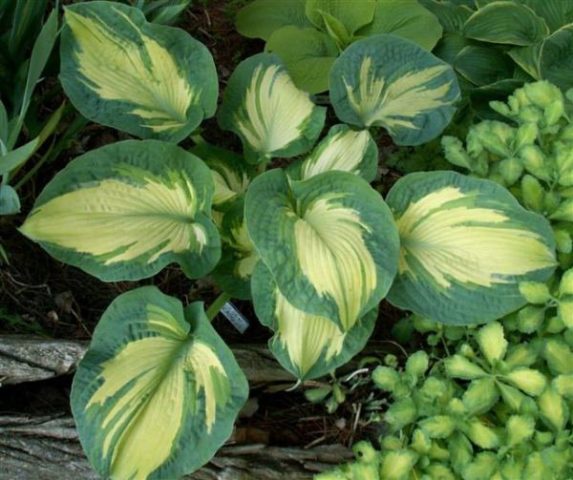
Hosta Golden Meadows is best grown in light shade.
Golden Meadows prefers light loams with a neutral or slightly acidic reaction (pH = 6.5-7.0). It will take root even on depleted soils, including sandy and clayey ones. But in this case it will need to be fertilized regularly.
The algorithm for landing is as follows:
- First, the site is dug up and a bucket of humus and complex mineral fertilizer are added to each square meter. This is not necessary - humus and fertilizer can be added during planting.
- Next, dig several holes of small diameter and depth up to 30 cm. It is important that the rhizomes fit freely. The interval between them is from 50 cm.
- Prepare the soil: you can take equal amounts of rotted manure and compost soil, add half the peat and 2-3 pinches of sand. If you know that the soil is very acidic, you need to add a glass of wood ash.
- Drain the soil with small stones at a depth of 5-7 cm.
- Fill with half the soil and water thoroughly.
- Place the seedling in the center and sprinkle it with soil on top and compact it (but not too hard). The root collar should not remain on the surface - it goes to a depth of 4-5 cm.
- Water and mulch again - for example, with peat, hay or sawdust.
Growing rules
Like other hosta species, Golden Meadows does not require special care. She does not need abundant watering or constant feeding. Water should be added only in cases where there has been no rain for a long time or there is a drought.The soil should not be too dry, much less crack. But you shouldn’t over-moisten it either.
As for fertilizers for Golden Meadows hosta, you can apply them a maximum of 3 times per season:
- At the beginning of April, any nitrogen fertilizers are added for active growth of green mass - for example, you can use ammonium nitrate.
- At the end of July, when flowering begins, potassium sulfate and superphosphates are added. An alternative option is complex fertilizer.
- At the end of August, after the end of flowering, a similar composition is added. Moreover, after this there is no need to feed - the host should have time to prepare for winter.

Even a minimal amount of fertilizer will be enough for the Golden Meadows Hosta to produce large, attractive leaves.
You can also loosen the soil in the tree trunk circle 2-3 times per season. Hostas love light soil with plenty of oxygen reaching the roots. It is advisable to keep a layer of mulch throughout the hot season - it retains moisture in the soil and blocks the growth of weeds.
Preparing for winter
The Golden Meadows host does not need special preparation for winter. There is no need to apply any fertilizers in the fall - the last time they are added is at the end of August. However, minimal care must be provided:
- Remove faded flower stalks by trimming them to the base. It is better to do this a month before the first frost.
- Carry out additional pruning, removing old shoots. It is not necessary to do this in the fall - many gardeners carry out a similar procedure at the beginning of the next season.
- It is also not necessary to cover the hosta for the winter, but it is better to mulch it with compost. If there are concerns, young seedlings can be covered with hay or straw.
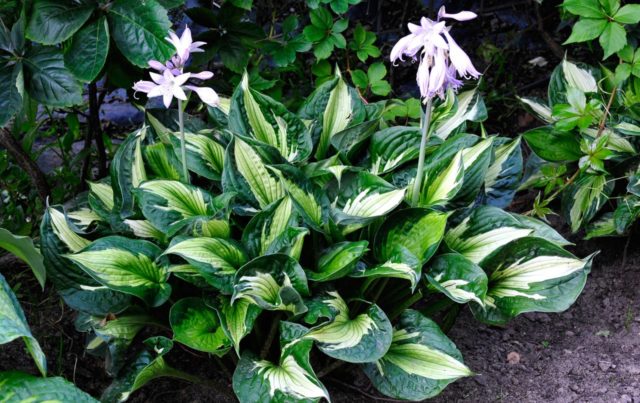
Since Golden Meadows is highly winter-hardy, it does not require special shelter.
Diseases and pests
Golden Meadows is resistant not only to frost, but also to pests and diseases. Its strong, tough leaves are inaccessible even to slugs, which often attack other species.
However, sometimes the black weevil parasitizes this host, causing the leaves to turn yellow and wither. If round yellow spots appear on their surface, this indicates a viral infection. In both cases, diseased shoots are completely cut off and burned. And if this does not help, you will have to destroy the entire bush so as not to infect neighboring plants.
Conclusion
Hosta Golden Meadows is very easy to grow - in fact, you only need to provide sufficient watering so that the soil does not dry out. Since this is a very winter-hardy plant, it can be grown anywhere. It is with hosta that novice summer residents should start decorating their garden.
